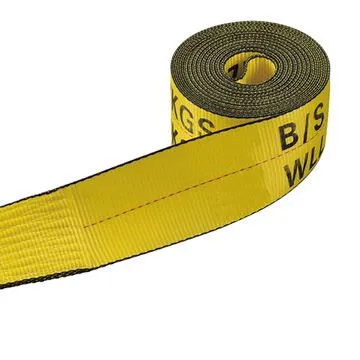- Afrikaans
- Albanian
- Amharic
- Arabic
- Armenian
- Azerbaijani
- Basque
- Belarusian
- Bengali
- Bosnian
- Bulgarian
- Catalan
- Cebuano
- Corsican
- Croatian
- Czech
- Danish
- Dutch
- English
- Esperanto
- Estonian
- French
- German
- Greek
- Hindi
- Indonesian
- irish
- Italian
- Japanese
- Korean
- Lao
- Malay
- Myanmar
- Norwegian
- Norwegian
- Polish
- Portuguese
- Romanian
- Russian
- Serbian
- Spanish
- Swedish
- Thai
- Turkish
- Ukrainian
- Uzbek
- Vietnamese
दिसम्बर . 15, 2024 23:47 Back to list
fiber tiles
The Applications and Advantages of Fiber Tiles in Modern Design
In recent years, the use of fiber tiles has emerged as a popular trend in interior design and architecture. These innovative materials combine aesthetics, durability, and versatility, making them an ideal choice for various applications including residential, commercial, and industrial settings. This article explores what fiber tiles are, their benefits, and the diverse contexts in which they can be applied.
Understanding Fiber Tiles
Fiber tiles are made from synthetic or natural fibers that are intricately woven or pressed to create a robust, lightweight tile. Common materials used in fiber tiles include glass fiber, carbon fiber, and even organic options like hemp or jute. The result is a tile that can mimic the appearance of traditional ceramic, stone, or wood while offering unique properties that enhance its usability.
Advantages of Fiber Tiles
1. Durability One of the primary advantages of fiber tiles is their strength. They are resistant to cracking, chipping, and breaking, which makes them an excellent option for high-traffic areas, including commercial spaces, entryways, and kitchens. Unlike conventional tiles that may succumb to environmental stressors, fiber tiles maintain their integrity over time.
2. Lightweight Compared to traditional tiles, fiber tiles are considerably lighter, which simplifies installation and reduces the structural load on buildings. This characteristic makes them particularly appealing for renovations where weight limitations are a concern.
3. Water Resistance Many fiber tiles are designed to be water-resistant, making them suitable for moisture-prone areas such as bathrooms, laundry rooms, or even outdoor spaces. This property helps prevent mold and mildew growth, ensuring a healthier living environment.
4. Aesthetic Versatility Fiber tiles can be manufactured in an array of colors, patterns, and textures, allowing for creative interior designs that can suit any style—from modern minimalism to rustic charm. Their ability to mimic the appearance of more expensive materials without the associated costs makes them an economical choice for homeowners and designers alike.
fiber tiles

5. Environmental Impact Some fiber tiles are produced from recycled materials or sustainable resources, making them an environmentally friendly option. With the increasing consumer demand for sustainable building materials, fiber tiles are becoming an attractive alternative for eco-conscious buyers.
Applications in Various Settings
The versatility of fiber tiles allows them to be used in various applications, ensuring their relevance in multiple settings.
- Residential Use Homeowners are increasingly incorporating fiber tiles into their living spaces. From bathroom walls and kitchen backsplashes to entire flooring solutions, these tiles can transform the ambiance of a home while providing practical benefits.
- Commercial Spaces Businesses are embracing fiber tiles for their durability and design flexibility. Restaurants and retail stores often utilize fiber tiles for their flooring, walls, and decorative elements, as these tiles can withstand heavy foot traffic while maintaining a stylish appearance.
- Industrial Applications Beyond aesthetics, fiber tiles serve functional purposes in industrial settings. They can be used in warehouses and factories where durability and easy maintenance are crucial. Additionally, their installation doesn’t typically require extensive downtime, making them a practical choice for businesses looking to minimize disruptions.
Conclusion
Fiber tiles represent a noteworthy evolution in material technology, offering a perfect blend of aesthetics, functionality, and sustainability. Their lightweight nature, durability, and design flexibility make them a compelling choice for various applications in residential, commercial, and industrial settings. As the world increasingly shifts towards sustainable and innovative design solutions, fiber tiles are poised to become a staple in modern architecture and interior design, appealing to a diverse range of tastes and needs. Whether for their visual appeal or their practical benefits, fiber tiles are undoubtedly paving the way for the future of flooring and wall treatments.
-
Transform Interiors with PVC Gypsum Ceiling: A Stylish, Durable, and Moisture-Resistant SolutionNewsMay.19,2025
-
The Smart Interior Upgrade: Discover the Durability and Versatility of Gypsum Ceiling Access Panel SolutionsNewsMay.19,2025
-
The Smart Choice for Interior Design: Discover the Value of PVC Gypsum Ceiling SolutionsNewsMay.19,2025
-
Mineral Fiber Ceiling Tiles: The Smart Blend of Performance and AestheticsNewsMay.19,2025
-
Mineral Fiber Ceiling Tiles: The Superior Choice Over Gypsum for Sound and Fire SafetyNewsMay.19,2025
-
Mineral Fiber Ceiling Tiles: Eco-Friendly Strength and Style for Every CeilingNewsMay.19,2025







